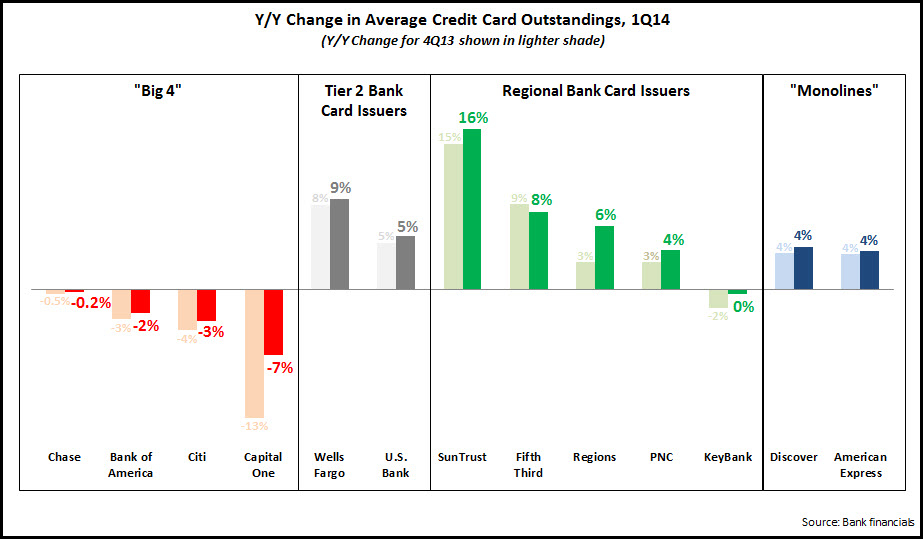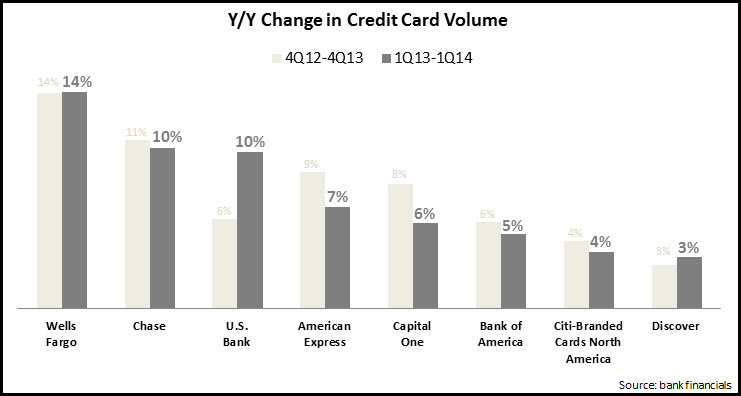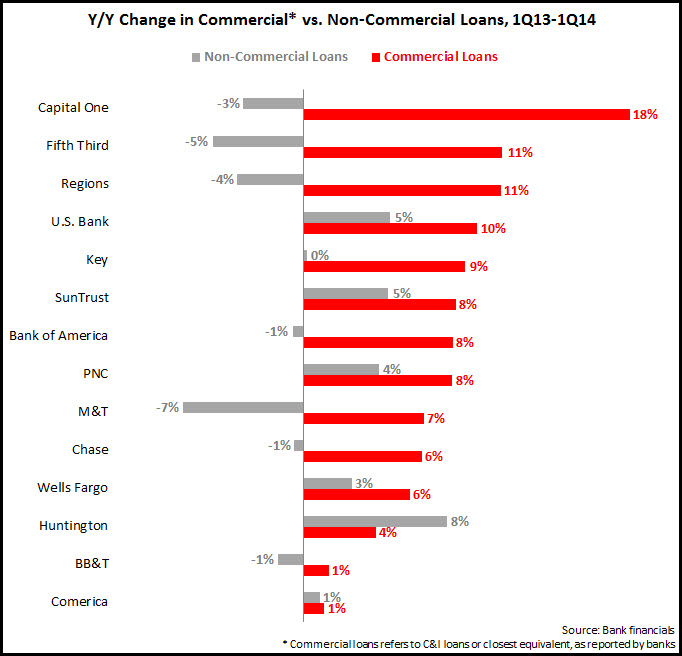Recent banking industry news continues to highlight growth in self-service channel usage, and an ongoing shift away from branch channels.
- The latest data from the FDIC shows that there were 96,684 domestic branches at the end of March 2014, a net decline of 672 branches from the end of March 2013. While the y/y decline is less than 1%, the number of branches has been steadily declining in recent years.
- In a recent presentation, Regions reported that branch transactions fell 8% in 2013, while mobile banking interactions rose 59%.
- A report by Bernstein Research found that Fifth Third could close nearly 600 branches, based on their deposit levels and proximity to other branches.
- Bank of America has continued selling off portions of its branch network, with recent sales of 13 Tennessee branches to First Horizon, as well as 13 branches in Michigan to Huntington Bank.
These trends point to a need for a significant reinvention of the branch channel if it is to remain relevant for consumers, and strategically important for banks. Here are five areas that banks can focus on in order to achieve this:
- Avoid both inertia and “following the crowd.” There is a danger that banks avoid making necessary changes to their branch networks because of internal resistance and a cultural predilection to carry on as before. Equally, banks may be inclined to close a significant portion of their branches because they perceive that it the prevailing industry trend. Both of these tendencies should be avoided. Decisions on branch numbers, density, design, staffing and support should be based on strategic analysis of market trends, competitive threats and overall company objectives.
- Don’t make branch decisions based solely on cost. Branches represent a significant cost for banks, and with declining branch usage as consumers gravitate to other channels for everyday banking transactions, the tendency will be to cut branches. However, this is a narrow view that does not take into account the sales, service and branding roles that branches play. Although Regions reported an 8% decline in branch transactions in 2013, it also claimed that 80% of sales came through the branch. And while Bernstein Research claimed that Fifth Third could close 47% of its branches, a Fifth Third spokesperson said that the branch remains the most visible brand identifier in their communities.
- Test different branch formats. Some of the leading U.S. banks have been piloting different branch formats in their markets. In February 2014, Capital One opened a new Capital One 360 Cafe in Boston (these cafes raise awareness of Capital One’s online bank unit). In May, PNC opened a pop-up branch in Chicago, and SunTrust opened an innovation branch in Atlanta. And banks like Bank of America and Citibank have opened flagship (or “destination”) branches. Banks are looking at these new branch formats not only to assess how they resonate with different customer segments, but also to determine optimal staffing levels and the impact of these branches on overall branch density within markets.
- Overhaul branch staffing. Changes in average branch size and format, as well as in the role of the branch, have important implications for branch staffing. Smaller branches require fewer staff, and staff activities will shift from handling everyday transactions to selling and providing specialized service and advice. This has important implications for recruiting, training, compensation, support and internal communications, and banks need an integrated branch personnel strategy with input from multiple functions within the bank, including HR, sales, service, marketing and product.
- Leverage branches to build beachheads in new markets. Traditionally, branches have marked a bank’s footprint within defined geographies. Now, some banks are moving beyond these geographic constraints to open branches in out-of-footprint markets to focus on specific segments (such as commercial, private banking and wealth management clients). BBVA Compass has been opening loan-production offices along the East Coast. BMO Harris opened a corporate banking office in Atlanta, well away from its traditional Midwest footprint. As these branches do not target the mass market, product expertise and service quality are more important factors that having strong branch density in a market.




